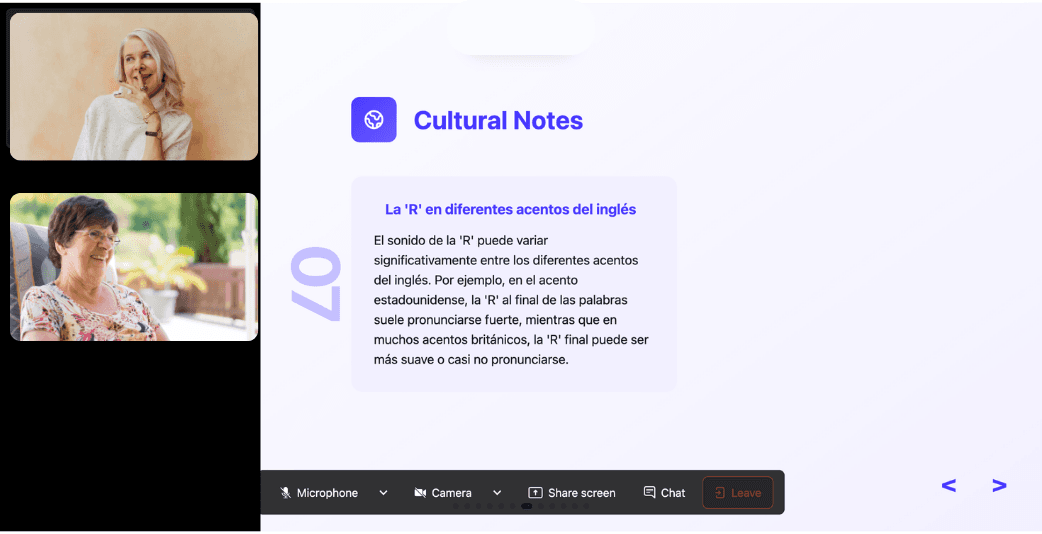Swiss Abbreviations: Key Ways to Reference Switzerland

Written by
Ernest Bio Bogore

Reviewed by
Ibrahim Litinine

Banking documents show "CHE" while sports broadcasts display "SUI" and postal codes use "CH" – why does Switzerland have multiple abbreviations? The answer reveals fascinating layers of linguistic heritage, international standardization, and practical communication needs.
Understanding Swiss abbreviations matters because misusing them in professional contexts signals unfamiliarity with international standards. Whether you're processing financial transactions, shipping packages internationally, or analyzing Olympic data, each abbreviation serves specific purposes within distinct systems.
In this article, we'll decode every major Swiss abbreviation, explain when to use each one, and reveal why this small nation requires such diverse representational codes.
Everyday Swiss Abbreviations You'll Encounter
Switzerland operates under multiple abbreviated forms because different international organizations established their own standards at different times. The most common abbreviations reflect practical needs: postal efficiency, banking security, and international recognition.
CH stands as Switzerland's primary abbreviation in most contexts. Derived from "Confoederatio Helvetica" (the Latin name for the Swiss Confederation), this two-letter code appears on license plates, internet domains (.ch), and postal addresses. The Latin origin ensures neutrality among Switzerland's four official languages – German, French, Italian, and Romansh.
CHE represents Switzerland in three-letter ISO country codes (ISO 3166-1 alpha-3). You'll see CHE in banking systems, international databases, and official documentation requiring extended country identification. Financial institutions particularly favor this format because it reduces processing errors compared to similar-looking two-letter codes.
SUI appears in sporting contexts, especially during Olympics and FIFA competitions. This abbreviation derives from "Suisse," the French name for Switzerland. International sporting bodies adopted SUI to avoid confusion with other "CH" combinations and to maintain consistency with their existing database systems.
The choice between these abbreviations isn't arbitrary – each serves specific communication needs within established international frameworks.
Official Government and Postal Abbreviations
Government communications and postal systems demand precise abbreviation standards to ensure accurate document processing and mail delivery across international borders.
The Swiss postal system exclusively uses CH for international mail routing. This abbreviation must appear in the correct position on international addresses – typically as the final element before the destination country name. Postal automation systems worldwide recognize CH as Switzerland's definitive identifier, making alternative abbreviations potentially problematic for mail delivery.
Confoederatio Helvetica appears on official Swiss currency, government seals, and constitutional documents. While not technically an abbreviation, understanding this full Latin designation explains why CH dominates Swiss official communications. The Swiss Constitution officially designates "Schweizerische Eidgenossenschaft" (German), "Confédération suisse" (French), "Confederazione Svizzera" (Italian), and "Confederaziun svizra" (Romansh) as the country's names, but Latin serves as the neutral administrative language.
Government agencies use CHE in international legal documents, trade agreements, and diplomatic correspondence where three-letter precision prevents misinterpretation. This becomes crucial in contexts where multiple countries share similar two-letter codes or when database systems require extended identification fields.
Swiss cantons maintain their own abbreviation systems for internal administrative purposes, but these remain secondary to the national identifiers in international contexts.
Swiss Abbreviations in Banking and Finance
Financial institutions operate under strict international compliance requirements, making Swiss abbreviation usage particularly systematic and regulated.
CHE dominates banking because the Bank for International Settlements (based in Basel) requires three-letter country codes for cross-border transaction reporting. Swiss banks must use CHE in SWIFT codes, international wire transfers, and regulatory filings to maintain compliance with global financial standards.
The CHF currency code (Swiss Franc) combines Switzerland's country identifier with "F" for Franc, following ISO 4217 monetary standards. This creates consistency between country identification (CHE) and currency representation within the same international framework.
Swiss financial documents often display CH- as a prefix for domestic bank routing numbers and account identifiers. This distinguishes Swiss financial instruments from similar numbering systems in other countries, particularly important given Switzerland's role as a global financial hub.
Banking regulations require precise abbreviation usage because automated compliance systems flag inconsistencies. Using incorrect Swiss abbreviations can trigger transaction delays, regulatory reviews, or processing failures in international banking networks.
Sports and International Competition Codes
International sporting organizations developed their own Swiss abbreviation standards to accommodate broadcasting, scoring, and administrative requirements unique to competitive athletics.
SUI became the Olympic standard because the International Olympic Committee needed three-letter codes that work across multiple languages and broadcasting systems. "SUI" derives from the French "Suisse" but functions effectively in German ("Schweiz"), Italian ("Svizzera"), and English contexts.
FIFA maintains SUI for football/soccer competitions, creating consistency between Olympic and FIFA databases. This standardization matters for international player transfers, tournament logistics, and broadcasting rights management across different sporting federations.
CH occasionally appears in regional European competitions where geographical proximity makes the postal-style abbreviation more intuitive for local audiences. However, major international sporting events prioritize SUI for consistency with established Olympic protocols.
Winter sports organizations particularly favor SUI because Switzerland hosts numerous international competitions. The abbreviation appears on scoreboards, timing systems, and broadcasting graphics throughout winter sporting seasons.
Internet and Digital Platform Abbreviations
Digital communications and internet infrastructure require Swiss abbreviations that function across diverse technical systems and user interfaces.
The .ch domain extension serves as Switzerland's official country code top-level domain (ccTLD). Managed by SWITCH (the Swiss education and research network), .ch domains signal Swiss origin to search engines, users, and automated systems. This creates SEO advantages for Swiss businesses targeting local markets.
CHE appears in international databases, API systems, and data exchange protocols where three-letter precision prevents automated processing errors. E-commerce platforms, shipping calculators, and international service providers rely on CHE for accurate country identification in dropdown menus and form validation.
Social media platforms and international apps typically display Switzerland in full rather than abbreviations, recognizing that mobile users prefer readable country names over coded references. However, backend systems often store CHE or CH for processing efficiency.
Search engines recognize CH, CHE, and SUI as Swiss identifiers, meaning content optimization should consider all three abbreviations depending on the target audience and search context.
Transportation and Shipping Abbreviations
International shipping and transportation systems require standardized Swiss abbreviations to ensure accurate routing and customs processing across global logistics networks.
CH dominates shipping addresses because Universal Postal Union standards mandate two-letter country codes for international mail sorting. Shipping companies, courier services, and logistics providers all recognize CH as Switzerland's definitive identifier for address validation and routing algorithms.
Airlines use CHE in passenger manifest systems, cargo documentation, and international flight routing databases. This three-letter format aligns with International Air Transport Association (IATA) standards for country identification in aviation systems.
Customs authorities require CHE in import/export documentation because World Customs Organization protocols mandate three-letter country codes for trade statistics and regulatory compliance. Incorrect abbreviation usage can trigger customs delays or processing complications.
Rail transportation systems within Europe often use CH for international ticketing and border crossing documentation, reflecting the postal standard's widespread adoption in European transportation networks.
Swiss Linguistic Variations and Regional Usage
Switzerland's multilingual nature creates additional complexity in abbreviation usage, with different linguistic communities showing preferences for specific abbreviated forms.
German-speaking regions occasionally use CH more frequently in casual contexts because it aligns with "Schweiz" pronunciation patterns. However, official communications maintain international standards regardless of linguistic region.
French-speaking areas sometimes favor SUI in informal usage, reflecting the "Suisse" linguistic connection. This appears particularly in regional sports reporting and local media coverage of international events.
Italian-speaking regions generally follow international standards without significant linguistic preference variations, likely due to the smaller population size and integration with broader Swiss communication practices.
Romansh-speaking areas, representing less than 1% of the Swiss population, typically adopt whatever abbreviation appears in official federal communications rather than developing distinct regional preferences.
These linguistic variations remain secondary to official standards in formal communications, but understanding them helps explain why different Swiss sources might emphasize different abbreviations.
Cultural Context and Abbreviation Etiquette
Swiss communication culture values precision and international compliance, making correct abbreviation usage a subtle indicator of professional competence and cultural awareness.
Using outdated or incorrect Swiss abbreviations signals unfamiliarity with current international standards. This becomes particularly important in business contexts where Swiss counterparts expect proper attention to administrative details.
CH demonstrates understanding of European postal and administrative systems, making it appropriate for correspondence, addressing, and casual reference within European contexts.
CHE shows awareness of international business standards and banking protocols, making it suitable for financial discussions, trade communications, and formal documentation.
SUI indicates familiarity with international sporting culture and Olympic traditions, appropriate for athletic contexts and sports-related communications.
The choice of abbreviation subtly communicates your relationship to Swiss culture and international systems. Using context-appropriate abbreviations demonstrates professional sophistication and cultural competence.
When NOT to Use Specific Swiss Abbreviations
Certain contexts make specific Swiss abbreviations inappropriate or potentially problematic, requiring careful selection based on system requirements and audience expectations.
Avoid SUI in financial or governmental contexts because banking systems and official documentation don't recognize sporting abbreviations. This can cause processing delays or system rejection in formal applications.
Don't use CHE in casual correspondence or informal communications because the three-letter format appears overly formal and technical. Recipients might perceive this as awkward or pretentious in personal contexts.
CH becomes problematic in databases or systems where two-letter codes create ambiguity with other countries or automated processing conflicts. Some technical systems require three-letter precision to function properly.
Never mix abbreviation styles within the same document or communication. Consistency signals professional competence while abbreviation switching suggests unfamiliarity with established standards.
International legal documents often specify which abbreviation format to use, making personal preference irrelevant. Always verify required formats before completing official paperwork or formal applications.
Swiss Abbreviation Usage in Professional Environments
Professional contexts demand precise Swiss abbreviation usage because business communications reflect organizational competence and international awareness.
Banking professionals must use CHE in compliance documentation, regulatory filings, and international correspondence because financial regulations specify three-letter country codes for legal precision. Alternative abbreviations can trigger compliance reviews or processing delays.
Legal practitioners typically use CHE in international contracts and legal documents because three-letter precision reduces interpretation ambiguity in multi-jurisdictional agreements. Court systems and legal databases recognize CHE as the standard format.
Academic researchers should use CHE in scholarly publications and international conference presentations because academic databases and citation systems follow ISO standards requiring three-letter country identification.
International sales teams benefit from understanding all Swiss abbreviations because different clients and systems may reference Switzerland using different codes. Flexibility demonstrates market knowledge and customer service competence.
Swiss Abbreviations FAQ
What does CH stand for in Switzerland?
CH stands for "Confoederatio Helvetica," the Latin name for the Swiss Confederation. This Latin designation ensures neutrality among Switzerland's four official languages and serves as the primary abbreviation for postal, internet, and most official purposes.
Why does Switzerland use SUI in sports instead of CH?
International sporting organizations adopted SUI (derived from the French "Suisse") to avoid confusion with other countries using similar abbreviations and to maintain consistency with existing Olympic and FIFA database systems. The three-letter format also works better for broadcasting and scoreboard displays.
When should I use CHE versus CH for Switzerland?
Use CHE in banking, legal documents, and international business contexts where three-letter precision prevents processing errors. Use CH for postal addresses, casual correspondence, and European regional communications where two-letter codes are standard.
Is it wrong to write "Swiss" instead of using abbreviations?
Writing "Swiss" as an adjective or "Switzerland" in full is always acceptable and often preferred in casual communications. Abbreviations serve specific technical purposes but aren't required in general writing or conversation.
Do Swiss people prefer specific abbreviations?
Swiss people generally follow international standards rather than showing strong personal preferences. However, they expect correct usage in professional contexts and may view abbreviation errors as signs of unfamiliarity with international business practices.
Why doesn't Switzerland use "SW" as its abbreviation?
Switzerland never adopted "SW" because international standardization occurred through Latin designation (CH) and French linguistic influence (SUI) rather than English abbreviation patterns. Additionally, "SW" could create confusion with other geographical or directional references.
Are there different abbreviations for different Swiss cantons?
Individual Swiss cantons have internal abbreviation systems for domestic administrative purposes, but international communications always use the national identifiers (CH, CHE, or SUI) rather than cantonal codes.
How do I know which Swiss abbreviation to use in international shipping?
Always use CH for international shipping addresses because Universal Postal Union standards mandate two-letter country codes for mail sorting systems. Shipping companies and postal services worldwide recognize CH as Switzerland's definitive identifier.
Learn Any Language with Kylian AI
Private language lessons are expensive. Paying between 15 and 50 euros per lesson isn’t realistic for most people—especially when dozens of sessions are needed to see real progress.

Many learners give up on language learning due to these high costs, missing out on valuable professional and personal opportunities.
That’s why we created Kylian: to make language learning accessible to everyone and help people master a foreign language without breaking the bank.
To get started, just tell Kylian which language you want to learn and what your native language is
Tired of teachers who don’t understand your specific struggles as a French speaker? Kylian’s advantage lies in its ability to teach any language using your native tongue as the foundation.
Unlike generic apps that offer the same content to everyone, Kylian explains concepts in your native language (French) and switches to the target language when necessary—perfectly adapting to your level and needs.

This personalization removes the frustration and confusion that are so common in traditional language learning.
Choose a specific topic you want to learn
Frustrated by language lessons that never cover exactly what you need? Kylian can teach you any aspect of a language—from pronunciation to advanced grammar—by focusing on your specific goals.
Avoid vague requests like “How can I improve my accent?” and be precise: “How do I pronounce the R like a native English speaker?” or “How do I conjugate the verb ‘to be’ in the present tense?”

With Kylian, you’ll never again pay for irrelevant content or feel embarrassed asking “too basic” questions to a teacher. Your learning plan is entirely personalized.
Once you’ve chosen your topic, just hit the “Generate a Lesson” button, and within seconds, you’ll get a lesson designed exclusively for you.
Join the room to begin your lesson
The session feels like a one-on-one language class with a human tutor—but without the high price or time constraints.

In a 25-minute lesson, Kylian teaches exactly what you need to know about your chosen topic: the nuances that textbooks never explain, key cultural differences between French and your target language, grammar rules, and much more.

Ever felt frustrated trying to keep up with a native-speaking teacher, or embarrassed to ask for something to be repeated? With Kylian, that problem disappears. It switches intelligently between French and the target language depending on your level, helping you understand every concept at your own pace.

During the lesson, Kylian uses role-plays, real-life examples, and adapts to your learning style. Didn’t understand something? No problem—you can pause Kylian anytime to ask for clarification, without fear of being judged.

Ask all the questions you want, repeat sections if needed, and customize your learning experience in ways traditional teachers and generic apps simply can’t match.

With 24/7 access at a fraction of the cost of private lessons, Kylian removes all the barriers that have kept you from mastering the language you’ve always wanted to learn.

Similar Content You Might Want To Read

Lay vs Lie: Which English Grammar Rule Do You Use?
The English language operates on precision, yet two words consistently derail even accomplished speakers: "lay" and "lie." In English, "lay" means to place or put something down in a specific position, requiring a direct object to complete its meaning. Meanwhile, "lie" means to recline or rest in a horizontal position, functioning as an intransitive verb that needs no direct object. This distinction matters because misusing these verbs signals a fundamental misunderstanding of English grammar mechanics—one that undermines credibility in professional and academic contexts.

Potatoes or Potatos: Which Spelling is Correct in English?
In the landscape of English language nuances, few spelling conundrums generate as much consistent confusion as the humble potato. Is it "potatoes" or "potatos" when referring to more than one? This seemingly simple question reveals a fascinating intersection of etymology, linguistic rules, and the evolution of English spelling conventions. Understanding this distinction doesn't merely satisfy academic curiosity—it equips us with practical knowledge that enhances our communication precision.

Began vs. Begun in English: Main Differences & Usage
English verb tenses can challenge even advanced learners, and the distinction between "began" and "begun" represents one of those subtle grammar points that separates fluent speakers from those still mastering the language. Both forms derive from the irregular verb "begin," but using them correctly requires understanding specific grammatical contexts and rules. In this comprehensive guide, we'll dissect the differences between "began" and "begun," providing clear explanations, practical examples, and actionable strategies to help you master their usage. By the end, you'll confidently know when to use each form in your writing and speech. Let's start with the fundamentals.

Plural Rules: Complete Guide to English Plural Nouns
Navigating English grammar requires understanding how nouns transform from singular to plural forms. This comprehensive guide examines the critical plural rules that will enhance your English proficiency.
![Te vs Tu: Master Spanish Pronouns [Spanish]](/_next/image?url=https%3A%2F%2Fcdn.sanity.io%2Fimages%2F147z5m2d%2Fproduction%2F1cdb1f608e7fe13cdf26cb5c6e254a33f19478ea-2240x1260.png%3Frect%3D175%2C0%2C1890%2C1260%26w%3D600%26h%3D400&w=3840&q=75)
Te vs Tu: Master Spanish Pronouns [Spanish]
Spanish learners consistently struggle with one fundamental distinction that native speakers navigate effortlessly: when to use "te" versus "tu." This confusion stems from a critical gap in how traditional language instruction approaches pronoun systems. Most courses treat these as isolated grammar points rather than interconnected elements of Spanish communication architecture. The distinction between "te" and "tu" represents more than grammatical correctness—it reveals your understanding of Spanish sentence structure and your ability to think like a Spanish speaker. Mastering this difference accelerates your journey from mechanical translation to natural expression.

Cringy vs Cringey in English: Grasp the Subtle Differences
Language evolves constantly, propelled by cultural shifts and digital communication. Among the many terms that have gained prominence in recent years, "cringy" and "cringey" stand out as particularly interesting examples of linguistic evolution. These terms have become ubiquitous in online discourse, yet their distinctions remain elusive to many English speakers and learners alike. The phenomenon of "cringe" transcends mere vocabulary; it represents a complex social and emotional response that has been codified into language. Understanding the nuanced differences between "cringy" and "cringey" offers insight not just into contemporary English usage, but into the psychological dimensions of social discomfort and how we articulate these experiences. This analysis examines the etymological origins, usage patterns, and contextual applications of both terms, while offering clarity on their correct usage across different English variants. For anyone navigating modern English communication, particularly in digital spaces, mastering these subtle distinctions proves invaluable.